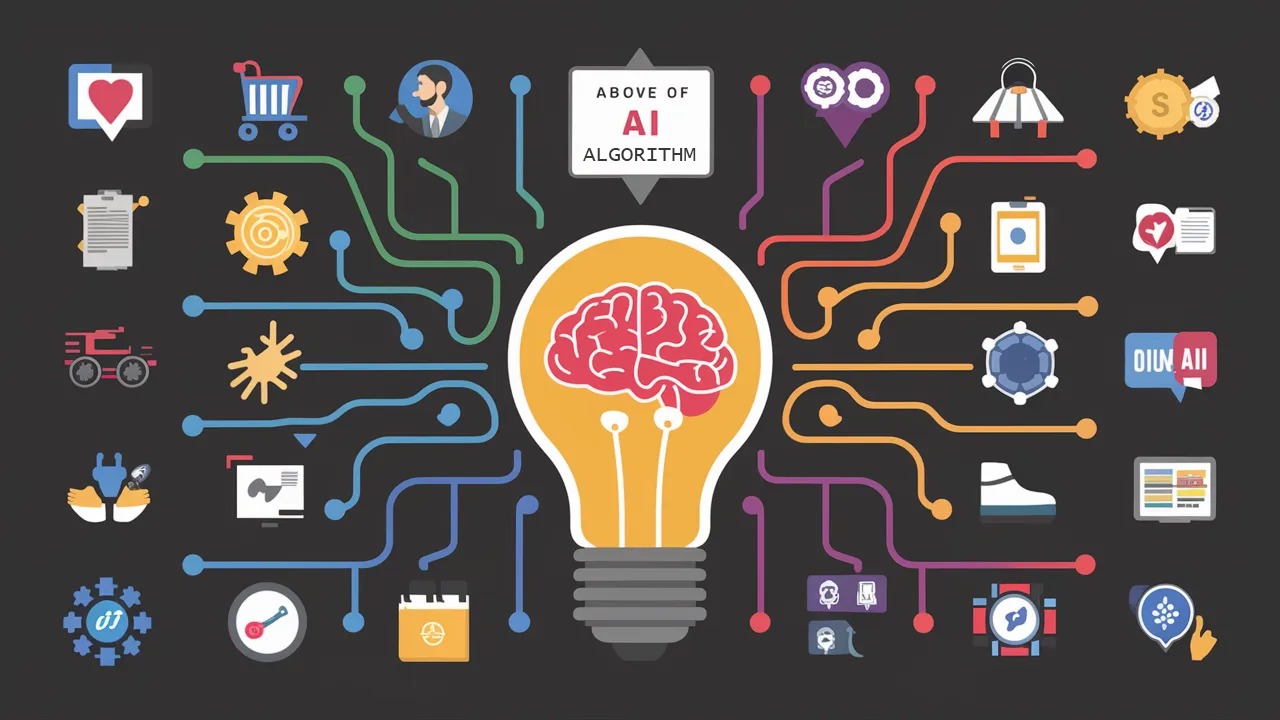
An overview of artificial intelligence (AI) algorithms
Hyphun Technologies
04 Jun
Demystifying AI: A Look Inside the Algorithms that Power Intelligence
These days, the majority of people are aware of artificial intelligence due to how swiftly technology is developing. It's likely that most of us have seen headlines claiming that automation will make jobs obsolete or that robots will take over the planet. Even though those stories are primarily science fiction rather than practical applications of AI, they surely keep many people interested in the field.
Numerous AI applications that are accessible to the general public include search engines, social media algorithms, auto-correction, facial recognition, and many more. Nevertheless, have you ever pondered how these systems are run?
Algorithms are what AI is powered on; however, not all AI algorithms are created equal. They are developed using various techniques and objectives. We'll discuss the four main types of AI algorithms and their functions in this article.
What is an AI Algorithm?
Think of an algorithm as a recipe. Just like a recipe tells you how to combine ingredients and steps to create a delicious dish, an AI algorithm provides a set of instructions for a computer to learn and solve problems. These instructions are specifically designed to mimic human intelligence, allowing machines to analyze data, identify patterns, and make decisions.
How do AI Algorithms Work?
At the core of most AI algorithms lies the concept of learning from data. Imagine feeding a computer mountains of emails. An AI algorithm can analyze this data to identify spam patterns, ultimately filtering your inbox more effectively. This learning process can be either supervised or unsupervised, which we'll explore next.
All algorithms have the potential to be simple, but AI algorithms are inherently more complex. Algorithms with artificial intelligence (AI) learn by ingesting training data. The primary distinction between various AI algorithm types is how that data is obtained and classified.
Fundamentally, an AI system uses training data—labeled or unlabeled, provided by programmers or obtained by the computer itself—to learn and advance. After that, it uses the training data as a foundation to finish its responsibilities. Certain AI systems can be trained to adapt and improve their operations on their own by absorbing new data and learning from it. Others will require a programmer's assistance to simplify.
Types of AI Algorithms:
There are three main categories of AI algorithms, each with its own approach to learning:
- Supervised Learning: This is like having a teacher guide you. The algorithm is trained on labeled data, where each piece of data has a predefined outcome. For example, an image recognition algorithm might be trained on millions of pictures labeled as "cat" or "dog." This allows the algorithm to learn the characteristics of each animal and categorize new images accurately.
- Unsupervised Learning: Here, the algorithm is left to fend for itself in a vast dataset. It finds hidden patterns and relationships within the data without any predefined labels. This can be useful for tasks like customer segmentation, where the algorithm might uncover groups of customers with similar buying habits.
- Reinforcement Learning: This is like learning through trial and error. The algorithm interacts with a simulated environment and receives rewards for taking desired actions. Think of training an AI to play a game; it learns through experimentation, receiving points for winning and negative feedback for losing moves.
Uses of AI Algorithms:
AI algorithms are now deeply woven into the fabric of our lives. They power:
- Social media recommendations: Ever notice how your social media feed seems to know exactly what you like? AI algorithms analyze your past behavior to suggest content you're likely to engage with.
- Fraud detection: Banks use AI algorithms to analyze transactions and identify suspicious activity that might indicate fraud.
- Medical diagnosis: AI algorithms can assist doctors in analyzing medical scans and identifying potential diseases with high accuracy.
Some common uses of AI algorithms include:
- Data entry and classification
- Advanced or predictive analytics
- Search engines (Google, Yahoo, Bing, etc.)
- Digital assistants (Siri, Alexa, etc.)
- Robotics (assembly machines, self-driving cars, etc.)
AI Algorithms and Business:
For businesses, AI algorithms are a game-changer. They can be used to:
- Optimize marketing campaigns: AI can personalize marketing messages to individual customers, leading to higher conversion rates.
- Improve supply chain management: AI algorithms can predict demand fluctuations and optimize inventory levels, leading to reduced costs and improved efficiency.
- Develop new products and services: AI can analyze customer data to identify unmet needs and inspire innovative solutions.
By understanding the power and potential of AI algorithms, we can harness this technology to create a better future for everyone. As AI continues to evolve, it's an exciting time to be alive, and the possibilities are truly limitless!

